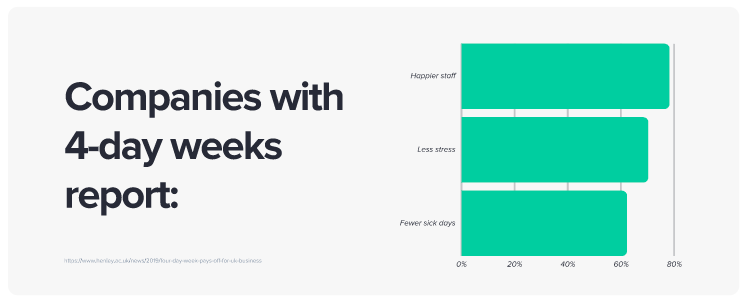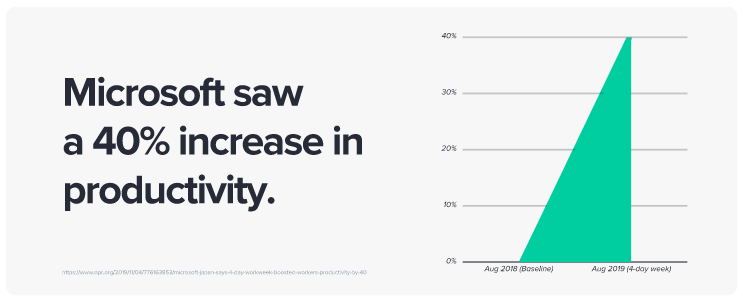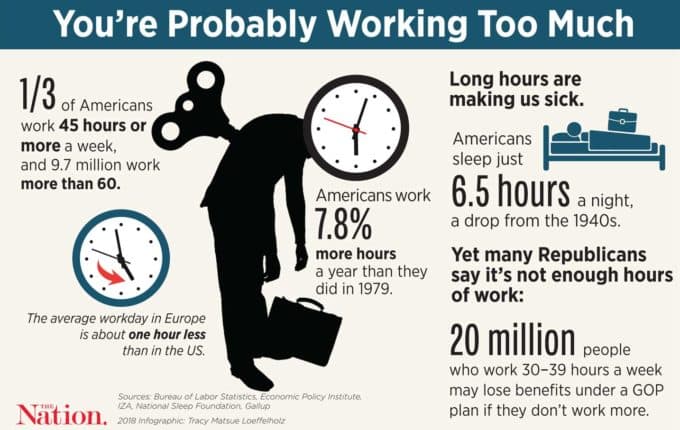In today’s fast-paced world, the most common complaint among employees is often the burden of overwork. Many feel they’re clocking in more hours than their colleagues while fearing they’re not doing enough to advance their careers. The pandemic blurred the lines between home and office, leading to even longer workdays and diminishing well-being. As we navigate this new landscape, the question arises: how many hours a week should employees really work to maximize productivity and maintain a healthy work-life balance? This blog dives deep into the evolving conversation about work hours, exploring the origins of the traditional 40-hour workweek, emerging alternative schedules, and the compelling evidence supporting shorter workdays. Join us as we uncover how a shift in hours could lead to happier employees and more efficient organizations!
There has never been a more important time to discuss how many hours a week an employee should ideally work. Not only for maximizing productivity but also for a healthy level of work-life integration.
Average Work Hours Per Week: The 40-Hour Workweek
Have you ever wondered about the origins of the 40-hour workweek? Who decided that 8 hours a day was the sweet spot?
“Eight hours labor, eight hours recreation and eight hours rest.” was is a phrase coined in 1817 by Robert Owen. He was a prominent 18th century Welsh mill owner and labor rights activist. In the 1800s it was common for workers to have inhumane 100 hour work weeks.
By the 1900s most industries were working 8 hours a day but 6 days a week. This was a practice till 1926 when Henry Ford removed one required day of work from his company’s schedules. Ford found that workers were more productive working 40 hours instead of 48 hours a week. His success inspired other manufacturing brands to adopt the 40-hour workweek.
In 1938, Congress passed the Fair Labor Standards Act, which required overtime to be paid to all employees working more than 44 hours a week. A later amendment reduced this limit to 40 hours making a 40-hour workweek a mandate by US law.
Since then a 40-hour workweek has been a norm at workplaces.
Yet many people are working more than 40 hours per week due to the rise of “hustle culture”. This rise is attributable to the idealization of long working hours. As well as the widespread belief that working longer hours is necessary for meteoric professional advancement. According to a Gallup poll, rather than 40 hours per week, the average American works 47 hours. The same poll also concludes that 18% of workers clock upwards of 60-hours per week.
According to an older Gallup poll, more than two-thirds of employed Americans are dissatisfied with their jobs. After many people complained about the traditional work week, a new belief has emerged. A compressed workweek can result in higher productivity and employee mental health. Alternative work schedules are:
- Four 10-hour workdays per week
- 32-hour workweeks
How Many Hours a Week are Optimal Working Hours?
When it comes to determining how many hours people should work, experts are once again divided. So the experiments have begun, and the preliminary results are promising.
In Sweden, reducing the workday to six hours may have increased productivity. 80 nurses were put on trial and moved to a 6-hour workday, 5-days a week schedule. Similarly, another 80 nurses were put to 10-hour shifts, 4-days a week. The trial continued for 2 years, and they found that nurses took fewer sick leaves in a compressed work schedule compared to the usual 40-hours per week.
The workday in some Singapore companies ends at 3:30 p.m. in order to allow employees to participate in cultural activities in the afternoon. That’s a good starting point, but how much time should you devote to work each day?
Laura Vanderkam, a time management expert, conducted an experiment to see if the number of hours you work influences your perception of how much time you have.
The average participant in the study worked 8.3 hours per day. When the results were analyzed, it was discovered that those who felt pressured with time had only one hour less in their schedule than those who had more time. Those who felt they had the least time in their week took advantage of the shorter hours. The other group, which believed it had the most time, worked one hour less.

Average Work Week Hours and Happiness
Denmark, a country that is one of the happiest on earth, has a 38-hour workweek. Work in Denmark isn’t excessive, but staff tends to stay in the office for no more than 37 hours per week, and many leave by 5 p.m. Most of the other Scandinavian countries enjoy the same work-life balance and a similar level of happiness.
Dan Buettner, a happiness expert, goes the extra mile in his approach. Dr. Buettner conducted extensive research in the world’s happiest countries (Sweden, Norway, Denmark, Finland). He has also conducted research on the world’s most satisfied people for the Gallup-Sharecare Well-Being index. He suggests that you work between 30 and 35 hours per week on a part-time basis to achieve work-life balance and happiness.
A vacation of at least six weeks per year is tied to higher levels of happiness, according to research conducted in the US by Dr. Buettner. He gives the new hires a reminder to take advantage of all of their vacation time. Also, they should keep negotiating with their employers for more time off every year.
Although, the American population is the one that works the most during vacations which leads to employee burnout and stress. These factors eventually diminish their morale and productivity. Almost two-thirds of Americans even report working during their vacations.
32 vs. 40 Hour Work Weeks
Though it may appear radical at first, businesses all over the world are now implementing the concept of a four-day workweek. Employers have reaped some unexpected benefits, including increased sales and profits. Businesses even in the United States and Russia are adopting this concept.
While it may appear radical to discuss reducing the number of hours employees work, particularly in the United States, we need to have this conversation. The number of hours worked has been increasing, and mobile phones and email are available to remind us of our jobs 24 hours a day, seven days a week.
This four-day concept has taken on a groundswell-like sensation in various regions of the world. Unlike traditional businesses, which only switch to a 10-hour workday every four days, Shake Shack has completely changed their schedule to accommodate a 32-hour workweek, with no pay cut. In exchange, employers are now requesting that employees complete their tasks in less time than in the past.
The company recently expanded its trial to one-third of its 164 U.S. locations. To provide that benefit, Shake Shack had to find other ways to save time, so it implemented computer software solutions to track the supply of ground beef.
Various companies are now thinking of adopting the four-day work week, while a few have already experimented with it and have seen promising results. For instance, Microsoft’s four-day work week experiment in Japan saw a 40% increase in productivity when calculated by sales per employee.

Benefits of a 32-Hour Work Week
Increase in Productivity
Research conducted by Stanford University concludes a direct relationship between higher working hours and a decrease in productivity. Overworked employees are less enthusiastic about their work and tend to perform less. A company conducted a trial and found that employees working 4-day a week tend to perform better than those working 40 or more hours a week. They are also able to maintain the same levels of productivity in the long run. However, the results aren’t that unexpected as the most productive countries across the globe work an average of 27 hours a week.
Equal Opportunities for Women
While there are various reforms in place to promote equal employment for men and women, many women are still burdened as primary caregivers. 89% of women have to leave their jobs as they have to focus on their caregiving responsibilities for children and the elderly. There is hope that in a 4-day workweek, the responsibilities can be divided more equitably between both genders. This will give women a chance to focus on their careers while still managing other responsibilities.
Employee Engagement for Reduced Absenteeism
A four-day workweek can help people establish a stronger work-life balance. They will have enough time to spend with their family and for recreational activities. This way, employees are less likely to be stressed as they have ample time to take care of themselves and aren’t overworked. All this reduces the excessive absenteeism that most companies are facing.
A study conducted in Sweden found that nurses that follow a 4-day work week are less likely to call in sick and were much more productive.

Reduce Carbon Emissions
An employee works for fewer days, which will eventually decrease the overall carbon footprint. Short working days mean shorter commute times because they get to avoid rush hour. For those workplaces, there’s no longer a need to turn on the lights, elevators, or computers on Fridays—nor do janitors need to clean vacant buildings. Electric bills have dropped even further during the summer, thanks to less air-conditioning.
The government of Utah reduced their workweek, with the average number of days worked per week falling from five to four. Over the first ten months, 6,000 metric tons of carbon dioxide emissions were reduced, as were US$1.8 million in energy costs.
5 Steps to Adopting a 32 Hour Work Week
Establish Clear Expectations and Outcomes
Several media outlets have reported that some businesses simply eliminate one workday from the week. They pay employees an hourly wage for the full 40 hours, even though they will only be working for 32 hours. Others choose to give a day off but extend the remaining four days to compensate, resulting in a workweek of 40 hours. According to a study conducted by the Society for Human Resource Management, employers are more likely to offer a compressed 40-hour workweek rather than the more traditional 32-hour workweek.
Analyze its Impact on Customers
Barnes emphasized in his argument that implementing a four-day workweek should not result in a decrease in productivity or customer service. “If you are unable to obtain this, the project will most likely fail. When you start a four-day workweek, it is critical that you have an open discussion about your options. It is a significant event to decide to close for the fifth day or to stagger employees’ work hours within the organization’s five-day business schedule. This decision has an impact on both operations management and providing quality customer service.
Rework Employee Policy and Wages
Employers should be aware of state overtime laws, according to Michael Cardman, a senior legal editor at XpertHR, an online human resources compliance resource. Overtime pay is required in all US states. If the employee works more than 40 hours per week, they are eligible for overtime. The strategic role of HR is critical for determining how the four-day workweek is to be implemented.
Establish Proper Communication and Training Channels
A four-day workweek requires an official company policy statement from the top of the organization, ideally from the company’s CEO, to be successful. This statement should be positively related to the outcomes that the organization seeks in order to attain those outcomes.
When implementing a flexible work arrangement, it is critical to ensure that managers and the rest of the workforce understand how to adjust to the new situation. Managers must understand more than just how to manage performance in a flexible work environment. Managers may also need additional training on how to manage performance in a flexible work environment.
How Many Hours a Week is Right for Your Organization?
Every industry and every company is unique. If the pandemic has taught us anything, it is the need to pivot quickly and efficiently. If you find that your employees are overworked, explore if massive workloads and long hours are contributing to it. In case you find that they are, talk to management to come to a solution that works for both employees and the bottom line.
When considering how many hours a week employees should work, it’s crucial to strike a balance between productivity and work-life harmony. Many studies suggest that a 4-day work week can be more productive, with employees often achieving the same or better results in less time. In the United States, the standard work week typically hovers around 40 hours, but some companies are exploring options like a 4-day, 10-hour work week to enhance flexibility. While the average work hours per week in the U.S. may vary, pushing employees to work 100 hours a week is often counterproductive and can lead to burnout. Beyond a certain point, such as 45 hours in a week, the increase in hours does not correlate with increased output. Instead, many workers thrive in environments where they can work efficiently within a reasonable framework—often around 35 hours—allowing them to maintain their health and personal lives. Ultimately, businesses should focus on work hours vs. productivity to create schedules that promote both effectiveness and well-being.
We shouldn’t go back to the Industrial Revolution where employees were working in inhumane conditions. Don’t forget that humans are the core of HR, and how many hours a week to work is dependant on their requirements and abilities.





